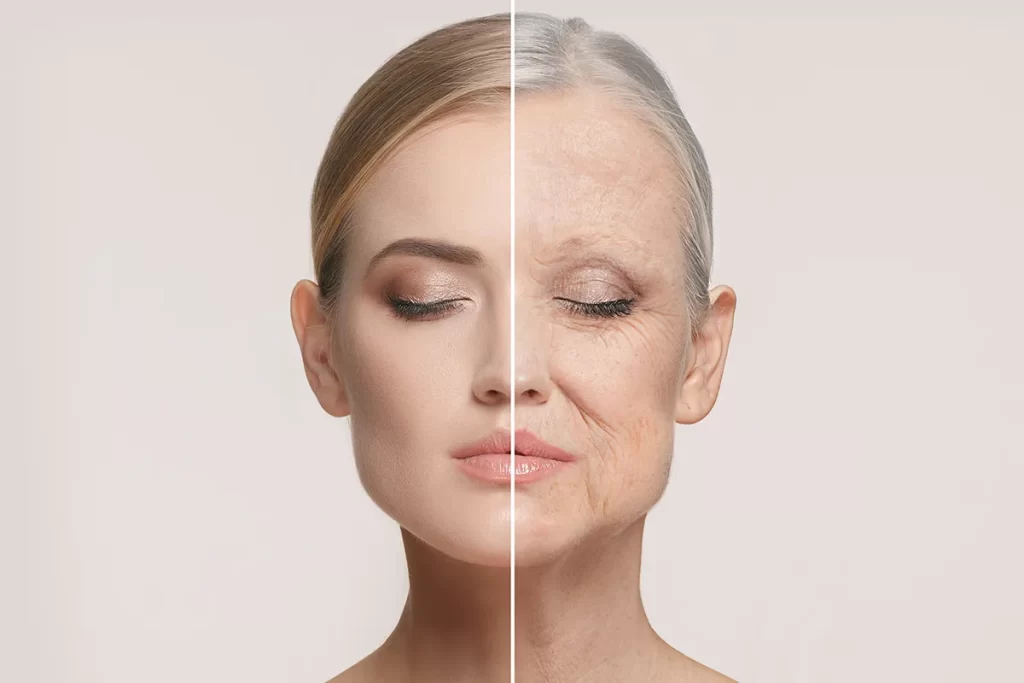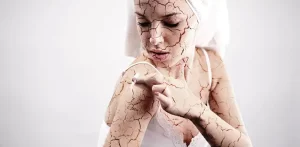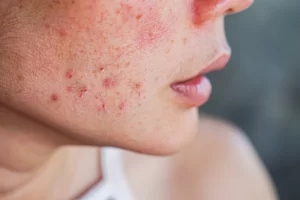The Science Of Skin Aging: Understanding Wrinkles And Loss Of Elasticity

The Science Of Skin Aging: Understanding Wrinkles And Loss Of Elasticity
What is the science behind aging skin?
The science behind aging skin is a complex interplay of intrinsic (internal) and extrinsic (external) factors that lead to visible and functional changes over time. Here’s a breakdown:
1. Intrinsic (Chronological) Aging: This is the natural aging process determined by our genetics. Over time, several key cellular and molecular changes occur:
- Reduced Collagen and Elastin Production: Collagen and elastin are the structural proteins that provide skin with its firmness, elasticity, and support. As we age, the production of these proteins by fibroblasts (skin cells responsible for their synthesis) naturally declines. This leads to:
- Thinning of the skin: Less collagen and elastin result in a loss of dermal thickness.
- Loss of elasticity (Elastosis): The skin becomes less able to stretch and snap back, leading to sagging and laxity.
- Fine wrinkles: Reduced support and elasticity contribute to the formation of fine lines and wrinkles, especially in areas of facial expression.
- Slower Cell Turnover: The rate at which old skin cells are shed and replaced by new ones decreases with age. This results in:
- Duller complexion: A buildup of dead skin cells on the surface can make the skin look less radiant.
- Rougher texture: The skin surface may become uneven and feel rougher.
- Slower wound healing: The skin’s ability to repair itself is diminished.
- Decreased Hydration: The skin’s ability to retain moisture decreases due to changes in the lipid barrier and a reduction in hyaluronic acid, a molecule that binds water in the skin. This leads to:
- Dryness: The skin feels less supple and may become flaky or itchy.
- Increased appearance of fine lines: Dry skin can accentuate the appearance of wrinkles.
- Reduced Fat Pads: The subcutaneous fat layer, which provides cushioning and support, thins over time. This contributes to:
- Hollowness: Loss of volume in areas like the cheeks and under the eyes.
- Increased sagging: Less underlying support makes the skin more prone to gravity.
- Changes in Melanocytes: While the number of pigment-producing cells (melanocytes) may decrease, their size can increase, leading to uneven pigmentation like age spots (solar lentigines).
- Flattening of the Dermo-Epidermal Junction: The interface between the epidermis (outer layer) and the dermis (inner layer) flattens, reducing nutrient transfer and making the skin more fragile and prone to separation, potentially contributing to wrinkle formation.
- Hormonal Changes: Especially in women after menopause, decreased estrogen levels significantly impact skin integrity by further reducing collagen production, hydration, and elasticity.
2. Extrinsic Aging: These are external factors that accelerate the intrinsic aging process:
- UV Radiation (Photoaging): This is the most significant extrinsic factor. Chronic exposure to UVA and UVB rays from the sun and tanning beds causes:
- Collagen and elastin breakdown: UV radiation damages these fibers, leading to significant wrinkling, sagging, and leathery skin.
- Hyperpigmentation: Sun exposure stimulates melanin production, resulting in sunspots, age spots, and uneven skin tone.
- Actinic keratoses: Precancerous skin lesions.
- Increased risk of skin cancer.
- Pollution: Exposure to air pollutants generates free radicals that cause oxidative stress, damaging skin cells, collagen, and elastin, leading to premature wrinkles and pigmentation.
- Smoking: Tobacco smoke contains toxins that impair blood flow to the skin, reduce collagen and elastin production, and increase free radical damage, resulting in premature aging, wrinkles (especially around the mouth), and a dull complexion.
- Poor Nutrition: A diet lacking in antioxidants, vitamins, and essential nutrients can impair the skin’s ability to repair and regenerate, contributing to premature aging. High sugar intake can also lead to glycation, where sugar molecules bind to collagen and elastin, making them stiff and less functional.
- Chronic Stress: High levels of stress can release cortisol, a hormone that can break down collagen and interfere with the skin’s repair mechanisms.
- Lack of Sleep: Insufficient sleep disrupts the body’s natural repair processes, including skin regeneration.
- Temperature Extremes and Low Humidity: Can lead to dryness and damage the skin barrier.
- Facial Movements: Repetitive facial expressions (smiling, frowning) over time contribute to the formation of expression lines and wrinkles.
Understanding the science behind skin aging is crucial for developing effective strategies to prevent premature aging and maintain healthy skin throughout life. This involves protecting the skin from external aggressors, supporting its natural functions, and adopting a healthy lifestyle.
What is the biggest cause of wrinkles?
The biggest single cause of wrinkles is ultraviolet (UV) radiation from the sun. This is often referred to as photoaging.
Here’s why:
- Damage to Collagen and Elastin: UV radiation penetrates the skin and breaks down collagen and elastin, the essential proteins that provide the skin with its structure, elasticity, and firmness. Without these supportive fibers, the skin loses its ability to snap back, leading to sagging and the formation of wrinkles.
- Cumulative Effect: The damage from sun exposure accumulates over a lifetime. Even if you don’t get sunburned frequently, consistent exposure to UV rays contributes to premature aging.
- Comparison to Chronological Aging: Studies comparing sun-exposed skin (like the face and hands) to skin that is typically protected from the sun (like the inner upper arm) clearly demonstrate the significant impact of UV radiation on wrinkle formation and other signs of aging.
While other factors like genetics, smoking, pollution, and repetitive facial expressions also contribute to wrinkles, sun exposure is the most significant and preventable cause of premature skin aging, including wrinkles.
At what age does skin lose elasticity?
Skin doesn’t suddenly lose elasticity at a specific age; it’s a gradual process that typically begins to become noticeable in your 30s to 40s.
Here’s a more detailed breakdown:
- Collagen Decline: Collagen production, a key protein responsible for skin’s firmness and structure, starts to decrease in your mid-to-late 20s or early 30s, declining by about 1% per year.
- Elastin Breakdown: Elastin, the protein that allows skin to stretch and snap back, also starts to degrade over time due to both intrinsic aging and external factors like sun exposure.
- Noticeable Changes: While the decline in collagen and elastin begins earlier, you’ll typically start to see the visible effects of this loss of elasticity, such as fine lines, wrinkles, and slightly looser skin, more prominently in your 30s and 40s.
- Menopause Impact: Women often experience a more significant decrease in collagen production during the first five years of menopause due to hormonal changes, which can lead to a more noticeable loss of elasticity.
- Individual Variation: The exact age at which you notice a significant loss of elasticity can vary due to genetics, lifestyle (sun exposure, smoking, diet), and skincare habits. Those with significant sun damage or unhealthy habits may experience a more rapid loss of elasticity.
Think of it as a gradual slope rather than a sudden drop-off. While the internal processes start earlier, the external signs become more apparent as time goes on. Consistent sun protection and a healthy lifestyle can help to slow down this process.


